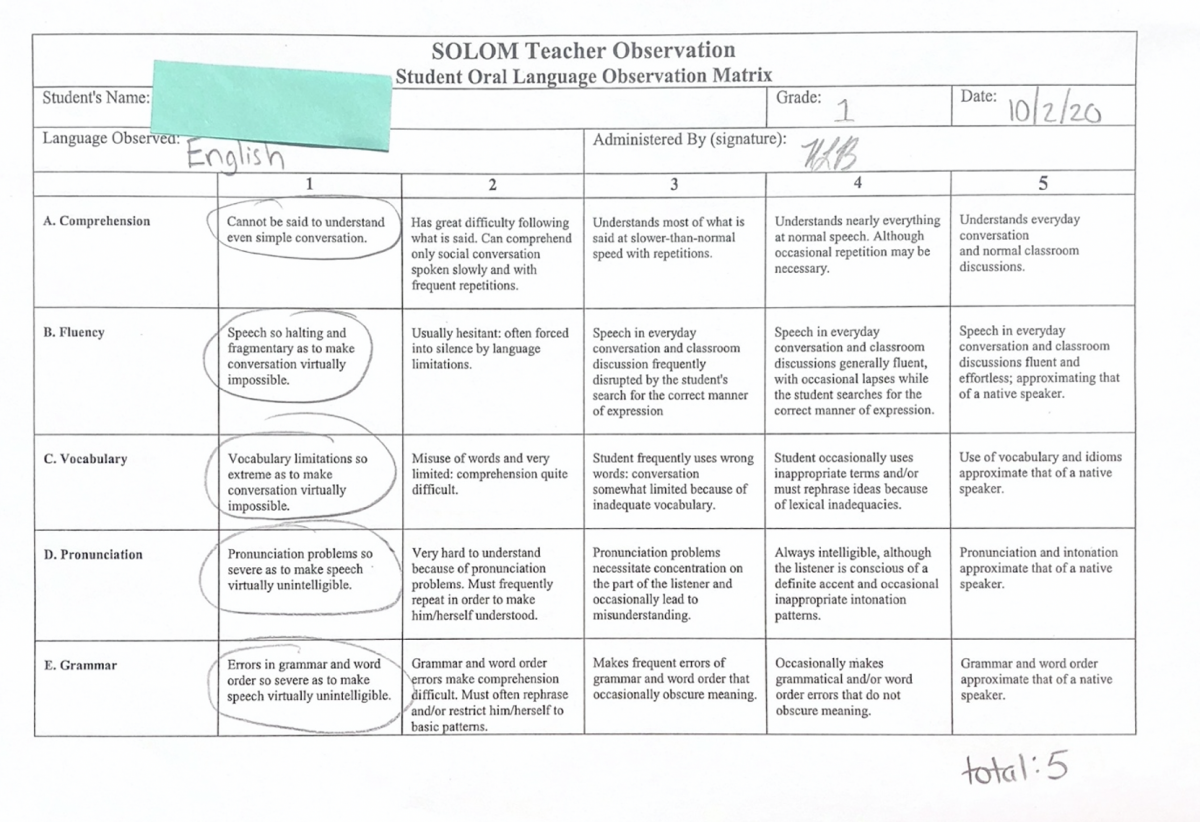How do we inform instruction?
In today’s world of education, it is paramount for a teacher to create and implement instruction that is geared towards all students. One of the most influential pieces to inform this instruction is data. This is a topic that all teachers hear about and must take seriously, because it directly impacts our ability to educate our students. As pointed out by Lessow-Hurley (2012), it is important to have multiple sources of data so that an accurate view of students and their achievements can be created. This is especially important to do with bilingual learners in terms of their academic and language progress. According to Lessow-Hurley (2012), in order to create this snapshot, a bilingual learner needs to be assessed in all four domains of language. These domains of language are reading, writing, listening, and speaking (Lessow-Hurley, 2012).
How do we inform instruction for English Learners (ELs)?
As educators for ELs, we find ourselves pulling information from standardized English language proficiency tests to inform instruction. Though, for our students who are blind and low vision, this is not a completely accurate snapshot. For example, in the state of Maryland, we use WIDA ACCESS for ELs as the English language proficiency test. According to their website, all language domain areas can be provided in braille and large print except for the domain of oral language. This is due to the fact of its’ visual nature, which presents a problem. This means that students’ oral language progress is not being captured for us to inform instruction.
What can we do to fix this?
So, how as educators, do we assess this area of oral language? The answer is the Student Oral Language Observation Matrix (SOLOM). This matrix is not a test, but a rating scale that can be used to assess students’ command of oral language based of observation (Herrera et al., 2018). It is this scale that can be used to assess any ELs in K-12 in the five main areas of listening comprehension, vocabulary, fluency, grammar, and pronunciation (Herrera et al., 2018). Once, the student scores around a 19 or 20, they can be considered proficient in oral language skills.
It is the use of this tool that allows us to:
- Track annual progress of a student
- Inform grouping based on language proficiency
- Guide instruction and accommodations for students
It is this tool that has allowed me to track the progress of oral language for my ELs in my classroom. For example, I have attached three scales used on the same student throughout the course of two years. As one can see, there has been a noticeable progression in his oral language skills. Looking at the scales, he scored a 5 in the beginning and is now scoring a 15, which is putting him closer to proficiency. It is the data that has allowed me to see this progress as a teacher in the classroom.
SOLOM: Resource
References:
Herrera, S. G., Murry, K. G., & Cabral, R. M. (2018). Assessment accommodations for classroom teachers of culturally and linguistically diverse students. Boston, MA: Pearson.
Lessow-Hurley, J. (2012). The foundations of dual language instruction (6th ed.). Boston, MA: Pearson. ISBN-13: 9780132685160
Example of Using the Matrix:









